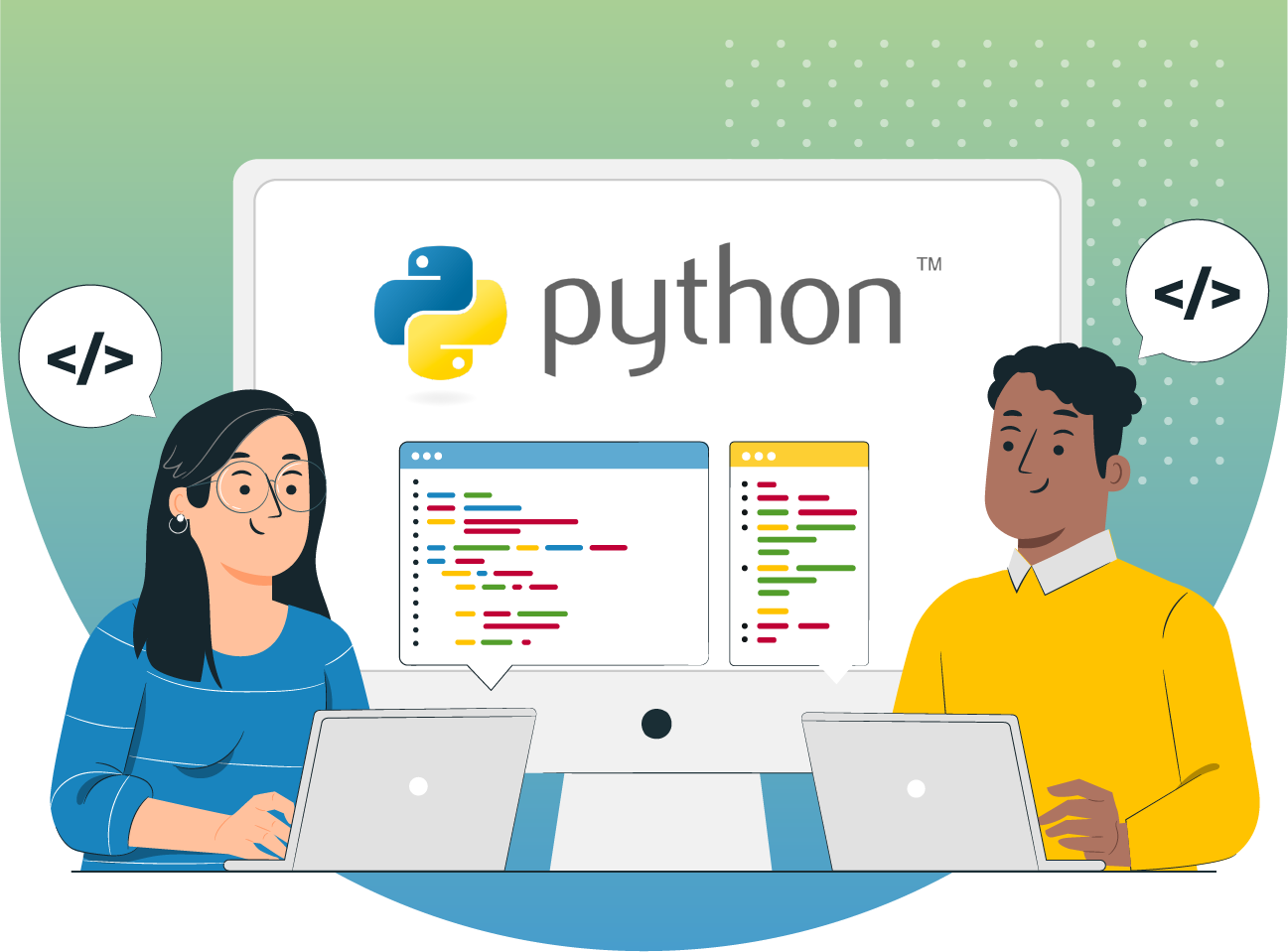 One tree
One tree One life


Python has emerged as the first choice of developers and top brands to build dynamic web applications, data science applications, AI & machine learning projects, and next-gen digital products. With over 36 years of experience in delivering best-in-class digital solutions, we are committed to transforming your vision into accomplished business goals using modern technologies. Our expertise and experience of dealing with a wide range of industry domains help us stay ahead of the rest with a promise to deliver beyond expected.
Our agile approach, proven methodologies, and years of experience in modern software development help reach greater heights of the businesses of any size, any domain.

Python is highly favorable for building modern, feature-rich, and scalable websites equipped with modern features
With hands-on expertise and experience working in a variety of domains, we build customized, high-quality, and scalable digital products using Python
Our team help integrate existing Python app with wide-ranging frameworks, tools, components, and services

Our experienced Python developers help you stand out of the crowd leveraging the power of Python with core programming in your solutions

We help transform your idea into a successful product using Python to get more done in fewer efforts
Django is a reliable, stable, and first choice of our Python developers to build dynamic web application quickly and cost-effectively

Our skillful Python developers are well-versed with Python tools and frameworks and have a shared vision to help businesses with reliable, feature-rich, secure, and well-designed software solutions.
We follow DevOps and Agile ways to deliver software at pace with a focus on continuous improvement and quality
We gather all the required information and analyze your business requirements. We begin with validating your idea or suggesting a feasible solution to meet your needs. In this phase, we find optimal solutions by conducting thorough research, estimation, risk analysis, and requirement elicitations.
Our goal is to create an intuitive, flawless, and great user experience that helps our clients win the UI/UX game. We chalk out UI/UX strategy, prepare software requirement specifications, create wireframes, and build software architecture, user interface design, and prototypes. Prototypes are tested and validated with feedback at an early stage.
In this phase of SDLC, our experienced software developers transform your ideas into digital reality with the chosen languages, frameworks, technologies, and platforms. Our team builds customized solutions following best coding practices and standards. We follow the agile approach to creating continuous integration and delivery pipeline.
We rigorously test the developed system for inconsistencies, bugs, security, quality, performance, and errors. Our software testers use automated and manual tests to evaluate the functionalities, and behavior of the software under different scenarios, and check whether the software product matches expected requirements or not.
After thorough testing and performance checks, we then deploy the developed system on preferred platforms or the cloud and integrated it with necessary configurations. We make sure that you will have an environment and system that is easy to manage and scale with less downtime in a production environment. We continue monitoring the performance and fixing issues with comprehensive and continuous technical support.
Our SLA-driven support and maintenance cover fixing issues, performance consistency, and changing user requirements. Our agile approach and continuous improvement cycle help organizations add new features seamlessly to stay relevant and competitive. Our services include adaptive, corrective, preventive, and perfective software maintenance to keep up with the changing needs.
Automate business processes and avail great benefits of flexibility by hiring Python programmers for wide-ranging software development requirements.
Get in Touch
Discover the diverse range of industries we proudly support with our innovative software solutions to companies of different business verticals. Our expertise spans multiple sectors, ensuring tailored services for every unique need.
Python was first released on February 20, 1991. It was created by Guido van Rossum.
Python is not native to the mobile environment. It does not have any mobile development capabilities. But, there are some libraries you can use to create mobile apps.
Microsoft and Python Institute offer a range of Python certificates for programmers with different skillsets and requirements.
Yes, you can develop an Android app using Python. Though, Android doesn’t support native python development.
Python is mainly used in server-side web applications. A combination of Python and JavaScript is also used to build web applications.
Yes, you can develop games in Python using PyGame. Python is a top choice for the rapid prototyping of games.
Python is a powerful and dynamic language that can be used in the front-end along with HTML and CSS. But, it is mainly a back-end programming language.
“SPEC House”, Parth Complex, Near Swastik Cross Roads, Navarangpura, Ahmedabad 380009, INDIA.
“SPEC Partner”, 350 Grove Street, Bridgewater, NJ 08807, United States.
This website uses cookies to ensure you get the best experience on our website. Learn more